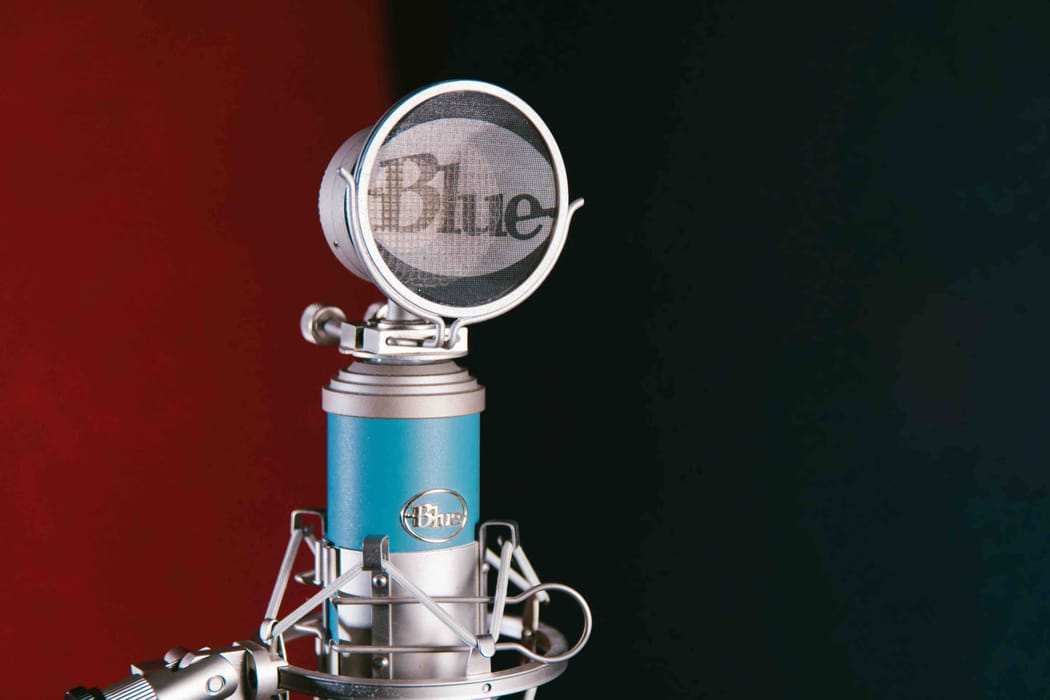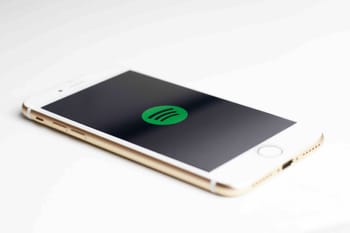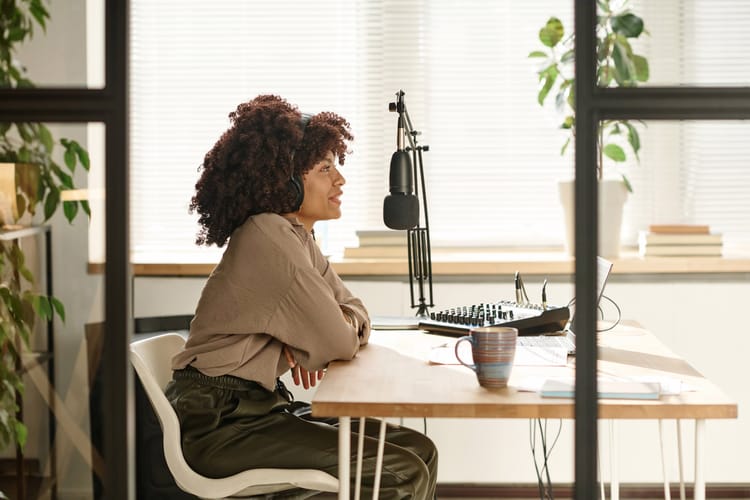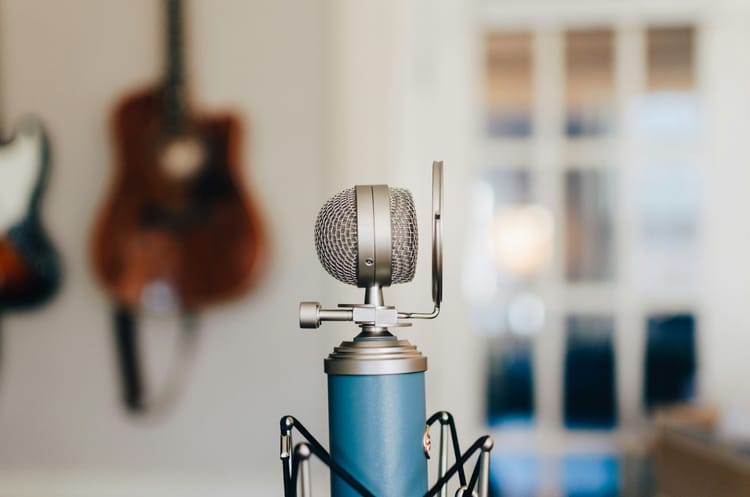Do you ever wonder how your favorite podcasts sound so crisp and professional? Well, it’s not just by magic. It's a meticulous podcast microphone setup and a host of savvy microphone techniques.
And if you’re scratching your head because you don’t know where to start, you’re in the right place. In this article, we’ll give our essential tips and tricks for optimizing your podcast mic setup, ensuring your voice is heard loud and clear without unwanted extras.
Ready? Let’s go.

Book Your Next Podcast Guest the Easy Way
With more than 70,000 members, MatchMaker.fm is the largest online community connecting podcasters & guests.
Join MatchMaker todayHow to Choose the Right Podcast Microphone
The right podcast microphone can capture the nuances of your voice, ensuring clarity and professionalism. Whether you're recording in a bustling urban apartment or a quiet home studio, understanding the differences between the following 4 microphone types will guide you to make the best choice for your needs.
1. Dynamic Microphones
One of the primary advantages of dynamic microphones is their ability to handle noise effectively. They’re less sensitive to ambient sounds, which means they can capture clear audio even in less-than-ideal recording conditions, like a busy recording space.
They’re known for their durability and versatility, and don’t require an external power source, simplifying their setup and use. They’re also generally more affordable, making them a practical option for beginners or those on a budget.
However, dynamic microphones typically produce a less detailed and warm sound than their condenser counterparts, which might not be ideal for capturing subtle nuances in a studio setting.
2. Condenser Microphones
Condenser microphones are prized for their high sensitivity and ability to capture a wide range of frequencies with exceptional detail. This sensitivity makes them ideal for controlled studio environments where capturing the nuances of sound is essential.
These microphones require an external power source, typically phantom power, which adds a layer of complexity to their setup but significantly enhances their performance.
They work well in environments with minimal background noise, delivering a clear, detailed recording that captures every subtle sound. This makes them perfect for recording vocals and high-frequency instruments.
However, their sensitivity also means they’re more likely to pick up unwanted background noise, which can be a drawback in less controlled settings.
While condensers are more delicate and require careful handling, their ability to produce high-quality, detailed recordings makes them a preferred choice for professional podcasters and studio recordings. They’re also typically more expensive than dynamic microphones.
3. USB Microphones
USB microphones are designed for simplicity and convenience. They’re plug-and-play devices that connect directly to your computer via a USB port, making them an excellent choice for beginners. These microphones are portable and easy to use, ideal for podcasters who record in various locations.
However, USB microphones often offer limited flexibility regarding sound quality adjustments and typically lack the advanced features of professional-grade XLR microphones.
4. XLR Microphones
XLR microphones, on the other hand, are the standard in professional audio recording. They provide superior sound quality and greater flexibility, requiring an audio interface or mixer. This additional equipment allows for precise control over sound settings and the ability to use multiple microphones simultaneously.
XLR setups are scalable, allowing podcasters to expand their equipment with additional microphones, outboard gear, and professional audio software. This makes them ideal for those seeking advanced recording solutions.
How to Set up Your Podcast Recording Space
Creating an optimal recording environment is essential for producing high-quality podcasts. The proper recording space minimizes unwanted noise and echoes, providing a clear and professional sound. Here’s how to do it in 2 steps.
Step 1: Choose the Right Room
Selecting the ideal room for recording is crucial. Opt for a smaller space where your voice doesn’t carry as much, which helps reduce echoes. Rooms with soft furnishings such as carpets, curtains, and upholstered furniture are preferable, as they absorb sound better than hard surfaces.
Avoid rooms with large windows or bare walls, which can reflect sound and create unwanted reverb. Choose an interior room away from external noise sources like traffic or street sounds.
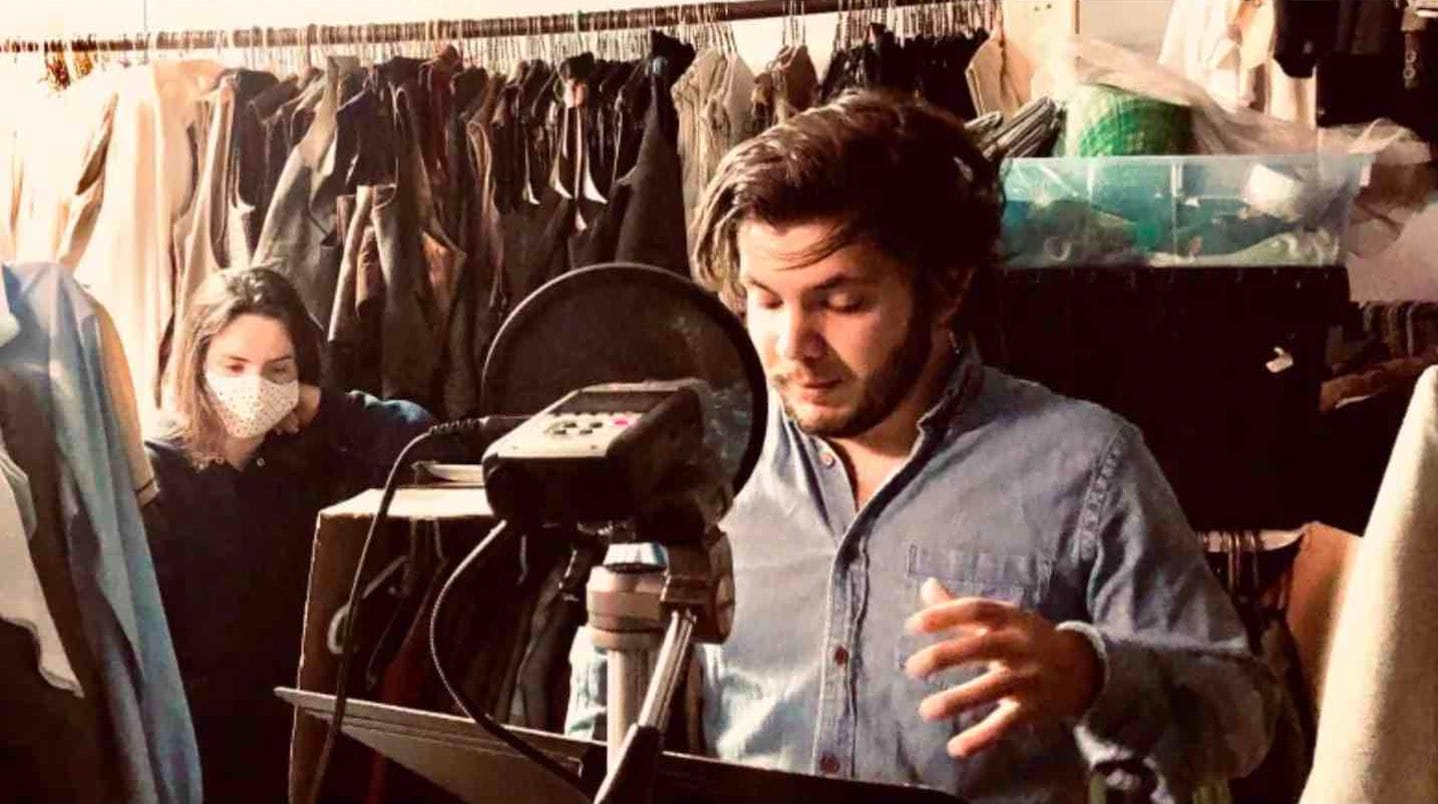
Step 2: Acoustically Treat the Space
Acoustic treatment is essential for minimizing echoes and improving the overall sound quality of your recordings. Here are some techniques:
- Foam Panels: Attach soundproof foam panels to the walls and ceiling to absorb sound and prevent it from bouncing around the room. These panels are effective at reducing reverb and echo.
- Bass Traps: Place bass traps in the room's corners to absorb low-frequency sounds. This helps create a balanced sound environment by reducing the muddiness that low frequencies can cause.
- DIY Solutions: If professional acoustic treatments are outside your budget, use blankets and pillows as effective DIY solutions. Hang blankets on walls and over hard surfaces to dampen sound reflections - place pillows around the room to absorb additional sound, especially in areas with hard floors.
These acoustic treatments will help create a controlled recording environment, leading to clearer, more professional-sounding audio.
6 Microphone Techniques for Recording High-Quality Podcast Audio
Proper microphone techniques help create clear, high-quality audio recordings. Below are our best and critical practices for optimizing your podcast microphone usage.
1. Place Your Microphone in the Correct Position
Your microphone should be placed at a height that aligns with your mouth and kept approximately 6 to 12 inches from your face. This distance helps prevent plosive sounds, which are bursts of air that occur when pronouncing consonants like 'p' and 'b'.
These plosive sounds can create spikes in your recording, leading to distorted audio. A stable stand or a boom arm can help maintain this distance consistently and minimize handling noise. Keeping the microphone at this optimal distance ensures your voice is captured clearly and evenly.
Your microphone’s height should align with your face & be kept 6-12 inches away.
2. Get the Right Angle
The angle at which you position your microphone can significantly affect the quality of your recording. Angling the microphone slightly toward your mouth at about a 45-degree angle helps prevent plosive sounds by directing the bursts of air away from the microphone's diaphragm.
This angle also reduces the chances of capturing breath sounds directly, resulting in a clearer recording.
A 45-degree angle helps prevent plosive sounds & reduces the chances of capturing breath sounds.
3. Learn the Difference Between Off-Axis & On-Axis Positions
Microphones are generally most sensitive when lined up with the source, especially at high frequencies. This is called the on-axis position, where the microphone directly faces the sound source.
Recording off-axis or at an angle to the sound source can reduce the signal level (volume) and alter the tonal quality of the recording. While on-axis positioning captures the most accurate sound, off-axis placement can help control the levels and reduce sensitivity to certain sounds.
Experimenting with different angles can help you find the best position for your recording environment and microphone.
An on-axis position is where the mic faces the sound source. Recording off-axis can help reduce sensitivity to sounds.
4. Invest in a Pop-Filter
Pop filters are essential tools for reducing plosive sounds and improving the clarity of your recordings. There are different types of pop filters available, each with its benefits:
- Nylon Mesh Pop Filters: These are the most common type and consist of a thin layer of nylon stretched over a circular frame. They are effective at diffusing bursts of air from plosive sounds, preventing them from hitting the microphone directly. Nylon pop filters are affordable and easy to attach to any microphone stand.
- Metal Pop Filters: Made from a thin, perforated metal sheet, these pop filters are more durable than nylon ones and can withstand more wear and tear. They provide similar plosive protection while often being easier to clean. Metal pop filters may offer slightly less acoustic transparency than nylon but are highly effective.
- Foam Windscreens: Although not a traditional pop filter, foam windscreens can serve a similar purpose. They fit directly over the microphone and are primarily used to reduce wind noise in outdoor recordings. While they can help with plosives, they are less effective than dedicated pop filters.
Using a pop filter, regardless of the type, will greatly enhance the quality of your recordings by minimizing plosive sounds, resulting in a cleaner and more professional sound.
Pop filters improve clarity, resulting in cleaner & more professional sounding audio.
5. Use Headphones to Monitor What Your Microphone Captures
Headphones allow for real-time monitoring, allowing you to hear exactly what the microphone captures. This immediate feedback helps you adjust your voice levels, tone, and microphone placement to ensure optimal sound quality.
Using headphones, you can detect and address issues such as background noise, plosive sounds, or distortion before they become problematic in the final recording.
There are two types of headphones: closed-back and open-back headphones:
- Closed-back headphones are designed to isolate sound, preventing audio from leaking out and being picked up by the microphone. They are ideal for podcasting as they offer superior noise isolation, allowing you to focus on your recording without external distractions.
- Open-back headphones provide a more natural sound by allowing some sound to pass through the ear cups. Due to their lack of isolation, they’re better suited for mixing and editing rather than live recording.
Headphones allow for real-time monitoring, helping you adjust your voice levels, tones, and mic placement to ensure optimal sound quality.
6. Adjust Your Podcast Mic’s Settings
The key microphone settings include gain, equalization (EQ), and compression. Let’s look at what each one means below, to help you find the right settings for you.
Gain
The gain control adjusts the microphone's input level. Setting the gain too high can cause distortion and clipping, while setting it too low can result in a weak signal. Aim to keep your peak levels between -6 and 3dB to prevent clipping and ensure a strong signal. Most audio interfaces or mixers will have a gain knob. Adjust this while monitoring your levels to find the sweet spot.
Equalization (EQ)
EQ allows you to adjust the balance of different frequency components in your audio.
- Low Frequencies: Reduce rumble and low-end noise by applying a high-pass filter around 80-100Hz.
- Mid Frequencies: Enhance clarity by slightly boosting the midrange frequencies (300Hz to 3kHz), making your voice sound more natural and present.
- High Frequencies: Boost frequencies above 6kHz to add brightness and clarity, but be cautious, as too much boost can introduce sibilance and harshness.
Compression
Compression helps control the dynamic range of your audio, making quiet parts louder and loud parts quieter. This ensures a more consistent volume level throughout your podcast.
- Threshold: Set the level at which compression kicks in, typically around -10dB to -20dB for spoken word.
- Ratio: Determines how much compression is applied. A ratio of 3:1 to 4:1 is standard for podcasts.
- Attack and Release: Control how quickly the compressor responds to changes in level. Fast attack and release times can help smooth out quick changes in volume.
By carefully adjusting these settings, you can significantly enhance the clarity and quality of your recordings, making your podcast sound more professional and enjoyable for your listeners.
Adjust the gain, EQ, and compression settings to find a more professional and enjoyable sound for your listeners.
Audio Editing Tip: Use Noise-Canceling Software
Noise-canceling software is excellent for reducing unwanted background noise in your recordings. Programs like Adobe Audition, Audacity, and Krisp can help identify and remove consistent background noises such as air conditioning hums, computer fans, or street noise.
- Adobe Audition: This professional-grade software offers a comprehensive noise reduction feature. Use the "Noise Reduction (Process)" tool by selecting a section of the audio that contains only the background noise, capturing a noise print, and applying the reduction to the entire recording.
- Audacity: A popular free option, Audacity also has a noise reduction tool. Highlight a sample of the noise, go to "Effect" > "Noise Reduction," capture the noise profile, and then apply it to your recording.
- Krisp: This software works in real time to remove background noise during live recordings. It’s beneficial for remote podcasting or when recording in less-than-ideal environments.
Using noise-canceling software can significantly improve the clarity of your recordings, making your podcast sound more professional.
3 Common Podcast Mic Setup Mistakes to Avoid
Even small podcast microphone setup mistakes can significantly impact the quality of your audio when recording an episode. By being aware of the following common pitfalls, you can take steps to avoid them and ensure your podcast sounds professional and polished.
1. Ignoring Room Acoustics
One of the most common mistakes podcasters make is neglecting the acoustics of their recording environment. Recording in a room with hard surfaces and poor sound absorption can result in echo and reverb, which makes your audio sound unprofessional.
2. Handling Noise & Plosives
Handling noise and plosive sounds are common issues that can degrade the quality of your recording. Handling noise occurs when you touch or move the microphone, causing vibrations that are picked up by the mic. Plosives are harsh bursts of air when pronouncing certain consonants, like 'p' and 'b,' resulting in unpleasant spikes in your audio.
Employ a shock mount to isolate the microphone from vibrations. Always use a pop filter to disperse the bursts of air from plosive sounds. Additionally, you can control plosives by speaking slightly off-axis to the microphone or by softening the pronunciation of plosive consonants. This setup helps minimize these noises, leading to a cleaner and more professional recording.
3. Inconsistent Audio Levels
Inconsistent audio levels can make your podcast challenging, as listeners may have to adjust their volume constantly. This can occur due to variations in speaking volume or improper microphone settings.
Our Top Podcast Microphone Recommendations for Podcasters
We can’t leave you hanging, so if you are looking for some of the best microphones on the market to start your podcasting journey (or to upgrade the one you already have), here are our top suggestions.
Dynamic Microphones
- Shure SM7B: Known for its rich sound and durability, it is perfect for studio environments.
- Rode PodMic: Offers broadcast-quality audio with a robust build.
- Audio-Technica ATR2100x-USB: Versatile with both USB and XLR outputs.
Condenser Microphones
- Audio-Technica AT2020: Excellent sound quality at a reasonable price.
- Rode NT1-A: Ultra-low noise and clear sound, ideal for detailed recordings.
- Blue Yeti: Versatile USB condenser mic with multiple polar patterns.
Ready to Master the Perfect Podcast Mic Setup?
Mastering your podcast microphone setup can drastically improve your audio quality. By choosing the right equipment, setting up your recording space properly, mastering the best microphone techniques, and avoiding the common mistakes, you'll create a polished, professional podcast that captivates your audience.

The #1 Podcasting Community
With more than 70,000 members, MatchMaker.fm is the largest online community connecting podcasters & guests.
Join MatchMaker today
